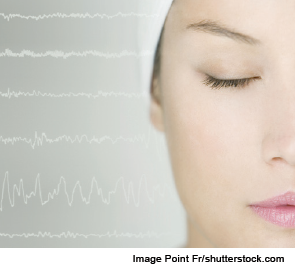 Obstructive sleep apnea (OSA) continues to challenge otolaryngologists and patients alike, with estimates of the condition affecting between 2% and 4% of the adult population in the United States. Gold standard OSA diagnosis is made through a polysomnogram (PSG) test, which uses the apnea/hypopnea index (AHI) as its main defining measure.
Obstructive sleep apnea (OSA) continues to challenge otolaryngologists and patients alike, with estimates of the condition affecting between 2% and 4% of the adult population in the United States. Gold standard OSA diagnosis is made through a polysomnogram (PSG) test, which uses the apnea/hypopnea index (AHI) as its main defining measure.
Explore This Issue
December 2014The AHI, which quantifies the number of times each hour a patient has a total (apnea) or partial (hypopnea) blockage of breathing during sleep, has been the most-used measure, not only of how OSA is diagnosed, but also of how well treatment modalities, including continuous positive airway pressure (CPAP) and surgery, improve breathing patterns.
Recently, however, some otolaryngologists have been questioning whether the AHI should be the main—and sometimes only—determining factor of treatment effectiveness, or whether other measures such as sleepiness scales, quality of life (QOL) measurements, and physiological measurements such as blood pressure should play a more prominent role.
The Challenges of AHI
Much of the focus around this questioning has arisen not only because of AHI’s value as a measurement index, but also because of its changing definition.
“As an index, the AHI can vary a lot between sleep centers and even within the same sleep center. You’ll get a different number depending on which definition and sensors you use,” said
Ofer Jacobowitz, MD, PhD, assistant clinical professor of otolaryngology at Mount Sinai Hospital in New York City. “Hypopnea can be defined based on either a 30% or 50% decrease in inflow and associated with either a 3% or 4% oxygen desaturation.or even an arousal. The recommended definition of hypopnea has changed multiple times over the years.”
The effects of this shifting definition have been noted in research. In a 2012 study published in The Laryngoscope that examined the effects of different PSG scoring systems on outcome measurement following OSA surgery, the researchers noted that interpretation of OSA surgical treatment literature remains problematic, because the study authors continue to use different AHI criteria for investigation and different AHI thresholds for defining surgical success (Laryngoscope. 2012;122:1878-1881). They found that the success rate for OSA surgical treatment ranged from 38.9% to 91.7%, depending on the criteria and metric used to define a successful outcome.
Another issue is that, even with a stable definition, the AHI number may not represent an accurate picture of an individual patient’s experience with the disease. “The AHI tells you about the sum of apneas and hypopneas, but two patients with the same AHI number may have completely different scenarios—one with mostly apneas and longer or more severe desaturations and one with mostly hypopneas with minimal desaturations,” said Dr. Jacobowitz.
 As an index, the AHI varies a lot, and there are multiple ways to define it. You’ll get a different number depending on which definition you use.
As an index, the AHI varies a lot, and there are multiple ways to define it. You’ll get a different number depending on which definition you use.—Ofer Jacobowitz, MD, PhD
“It used to be thought that the more severe a patient’s sleep apnea, the more sleepy he or she would be, but that turns out not to be the case,” said Eric Kezirian, MD, MPH, professor of clinical medicine in the department of otolaryngology-head and neck surgery at the Keck School of Medicine of the University of Southern California in Los Angeles. “Sleep apnea can reduce the sleep quality for patients, resulting in sleepiness, fatigue, and decreased quality of life. It turns out the AHI doesn’t capture that.”